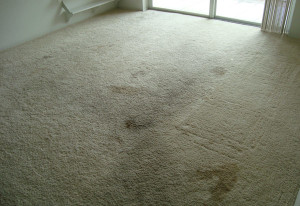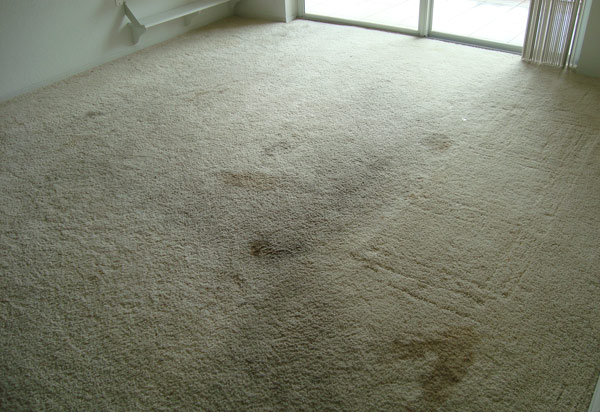 If someone asked you where mold typically shows up in the average home, you’d probably run through a list of the usual suspects: In musty basements and attics, behind old wallpaper, between the bathroom tiles, and maybe in the dark corners of the kitchen. Indeed, these are all places where mold is typically found.
If someone asked you where mold typically shows up in the average home, you’d probably run through a list of the usual suspects: In musty basements and attics, behind old wallpaper, between the bathroom tiles, and maybe in the dark corners of the kitchen. Indeed, these are all places where mold is typically found.
But you probably wouldn’t think to mention carpet as a possible hot spot for mold growth. How could this material be conducive to mold growth, despite vacuuming and even professional cleanings?
The first thing to understand is that mold can and does grow in carpet. Professional mold remediation companies and even government agencies have identified the carpet in your home as a possible source of mold growth. Once there, carpet mold can easily spread to other areas and pose serious risks to your health and property.
Fortunately, there are things any homeowner can do to stop mold from taking up residence in the carpet. Even if you do end up with a problem underfoot, you may be able to eliminate it without having to eliminate your carpet and start over.
The ‘how’ and ‘why’ of mold growth in carpet
There are only a few basic things mold needs in order to grow. A source of air, a source of moisture, and a suitable surface to colonize. Where carpet is concerned, moisture is the single biggest risk factor. Wet or moist carpet is a definite recipe for mold. Do any of the following statements apply to you?
I have carpeting below ground-level
My local climate is often damp, moist and/or humid
My carpet has been subject to water damage in the past
If so, your carpet may be infested. That’s because the padding and individual fibers in various types of carpet become a perfect habitat for mold once moisture is added to the equation.
How can I stop this from happening?
Mold prevention means learning about the mechanics of mold. Why does it grow? What does it need? Once you understand the recipe for mold, you can focus on removing any unwanted factors that cause problems. When it comes to carpet mold, here are a few tips:
Dehumidifiers and ventilation systems are an effective way to control moisture in carpeted area
In areas where high humidity and/or water damage are likely, consider an alternative type of flooring. Tile and concrete are two excellent options.
If carpeting is still your preferred type of flooring in such areas, consider installing carpet that is resistant to mold. There are now many brands of carpeting that are manufactured to be inhospitable to mold.
In case of serious water damage to your carpet, be wary of trying to save the carpet. This may be an added expense, but once carpet has been soaked through and infested with mold, it’s very difficult to bring it back. Exposure to mold is far more costly.
Avoid carpet cleaning methods that use a great deal of water to clean your carpet. Most modern carpet cleaning companies use hot water extraction technology that deep cleans your carpet without getting it too wet.
What to do next
Knowing whether or not your carpet is infested with mold can be tough. That’s why many homeowners opt for a professional mold inspection. Using proven technology and expertise, the pros can identify where the problem lies and exactly how to deal with it. In the meantime, keep this blog post in mind and take proper precautions. You’ll have a much better chance of never having to make that call!
Good luck in keeping your carpet mold-free, and thanks for reading. Please comment below!

